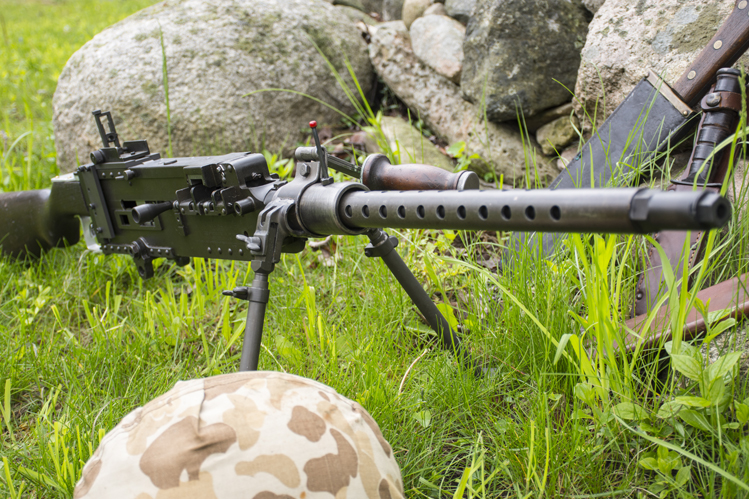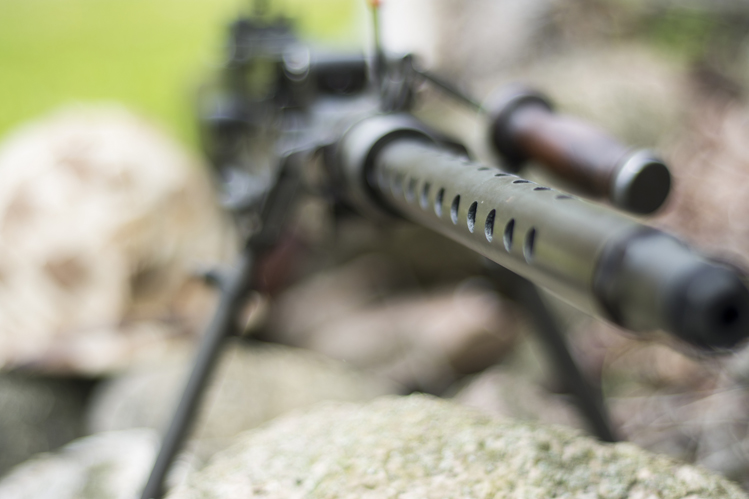
In the later stages of the Second World War, as the European campaign reached its conclusion, the United States Marine Corps in the Pacific Theatre was still enduring some of the hardest and bloodiest battles of the war. Fighting tooth and nail at places like Guadalcanal, Midway, and Iwo Jima, the inherent inability to functionally retreat from island-based combat combined with the Japanese troops' refusal to surrender meant the war in the Pacific was a gristmill; grinding men and machinery on both sides into dust under the oppressive tropical sun.
And for historical gun and militaria collectors, that effect was almost literal, with relics from the Pacific Theatre being some of the most difficult to find. In the frenetic pace of combat in an area that stretched out over the span of thousands of miles of ocean dotted with tiny islands, things were easily lost, and simply forgotten as the next objective hove into view. Likewise, the very environment itself conspires against the reclamation of many objects; where rifles and relics can still be found embalmed in the basements and battlefields of western Europe, the Pacific's tides, salt air, and tropical conditions have long since turned any similar objects into unidentifiable hunks of oxide beneath the sand. And in other areas, like the Aleutian Islands off the coast of British Columbia, whole Japanese tanks, artillery batteries, and submarines lie rusting on islands too remote to ever be recovered from.

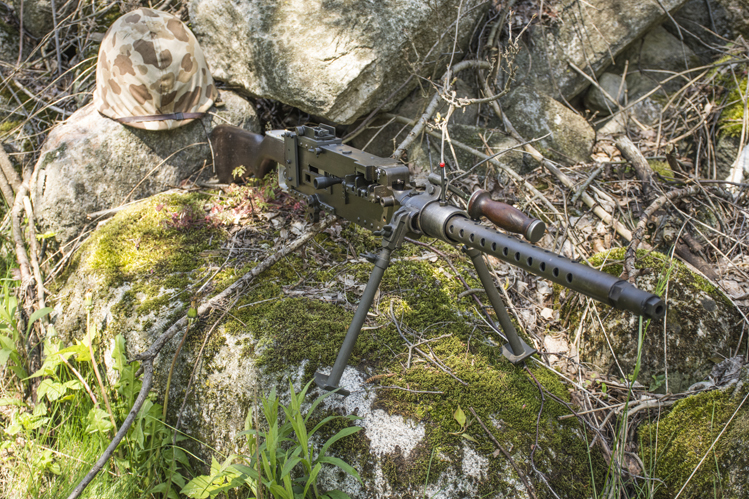
That need would be satisfied in the later days of the campaign on Guadalcanal, when intrepid Marine Assaulters began experimenting with the Browning Machine Gun, Cal. 30, M2, Aircraft. Better known as the AN/M2, this Browning 1919-based gun was a full third lighter than 1919A4 the Marines were used to, weighing just 21.5 pounds rather than the 31-pound 1919A4. It also had a cyclic fire rate roughly three times that of the standard 1919A4 with a cyclic rate of between 1200 and 1350 rounds per minute. Typically fitted to blister and tail gunnery positions in various bomber aircraft, the multitudes of wrecked Douglas SBD Dauntless aircraft in the theatre became the donor of choice, its tail gunner's position being fitted with a pair of AN/M2s.
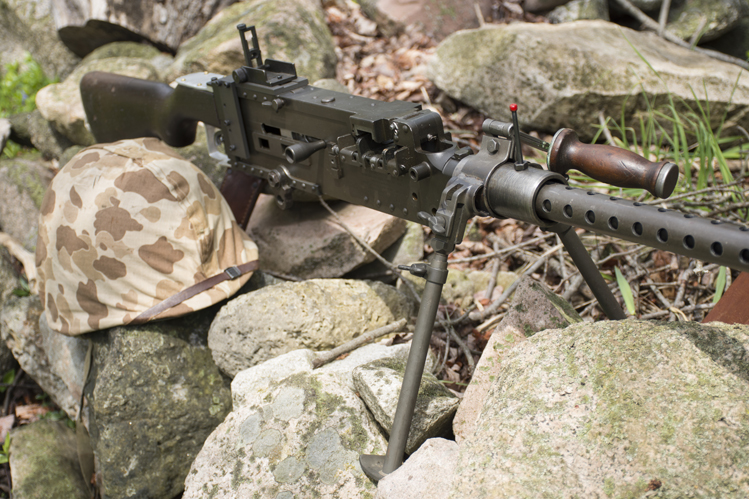
But the Marine Corps' mantra of adapt and overcome prevailed. One intrepid private, William H. Colby of Gloversville, New York, took it upon himself to fit his AN/M2 with a bipod at the muzzle; transforming the balky aircraft machine gun into something that could at least be fielded… even with its awkward spade grips. Two days after the beachhead, his platoon was ambushed, and Colby immediately dropped to the ground and deployed his modified AN/M2 machine gun. Being fed .30-06 rounds by his assistant gunner, Pvt. Edward F Crumlish, Colby and overwhelmed the Japanese forces, and the attack was repelled due largely to the AN/M2's ridiculous rate of fire.
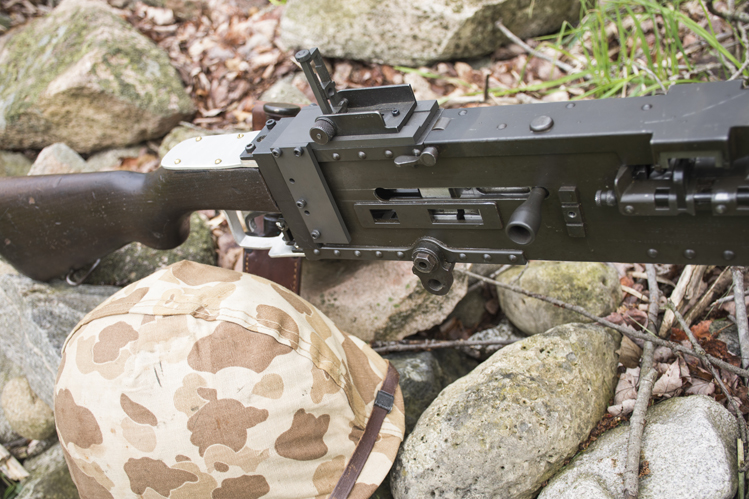
Roughly one year later, in November of 1944, one of the Marines that had concocted the original Stinger machine gun, Sergeant Mel Grevich, had been re-assigned. After Bougainville, his Parachute Battalion had been disbanded, and Grevich found himself in the machine gun section of G Company, 28th Marine Regiment, 5th Marine Division where he was woefully disappointed (yet again) by the performance of his Marines' light machine guns. Recalling his Stinger prototype, Grevich set to work replicating the gun, eventually creating six guns total before sailing for Iwo Jima. One gun was assigned to each of G Company's three rifle platoons, one more to the company's demolitions section, and the fifth carried by Grevich himself. The sixth gun was carried by another parachute-qualified Marine by the name of Tony Stein from A Company, 28th Marines.
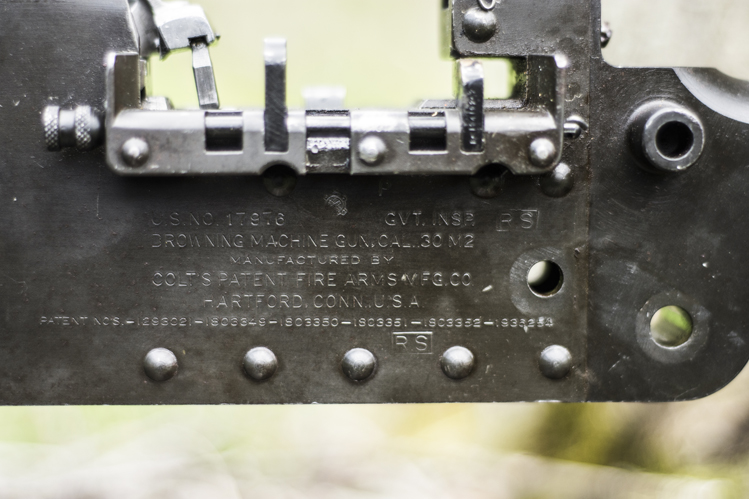
With only a handful of Stinger machine guns having ever been created, and all having subsequently been used in one of the most frenetic theatres of war, it's no surprise that none survive today. Military inventories do not like non-standardized equipment. Tony Stein's own Medal of Honor citation doesn't even list the Stinger; it simply refers to his use of "a personally improvised aircraft-type weapon." So it's unlikely that any surviving Stingers, beyond perhaps Stein's own, would have been retained in stocks... and certainly not to this day. So when Paul Shull, the Canadian host of the Smithsonian Channel's TV show "The Weapon Hunter" wanted to tell the story of and shoot an AN/M2 Stinger machine gun, he realized he have to build one, so he turned to the Canadian Historical Arms Museum.
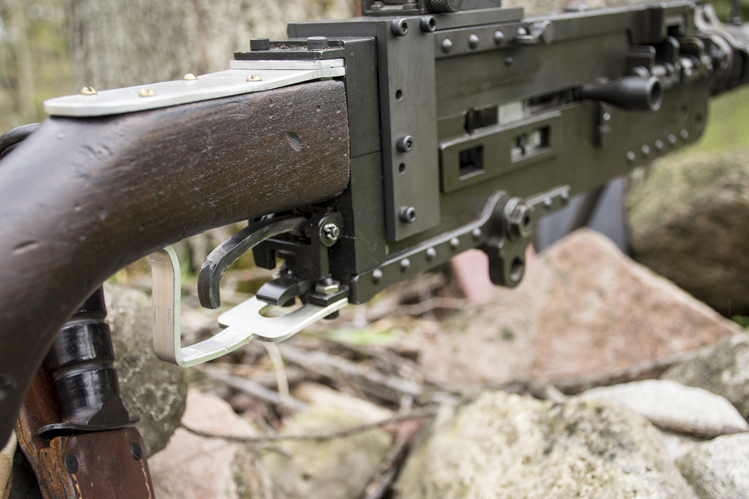
Since the gun is pictured here in one piece, and the season finale of The Weapon Hunter saw Paul end the show with the same number of limbs and digits he opened it with, the recreation obviously worked. From start to finish, the project took roughly three months to complete; slightly longer than the original modifications due to the desire to remain historically accurate to a pre-existing formula rather than simply make a functional gun.
